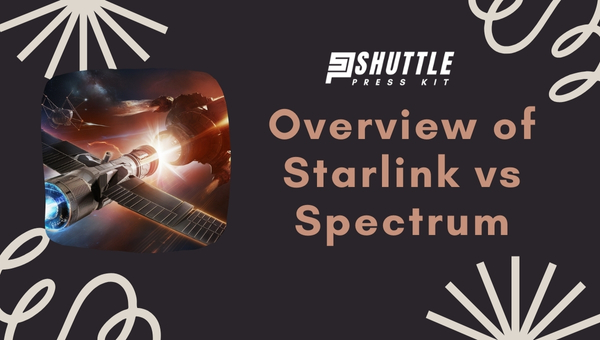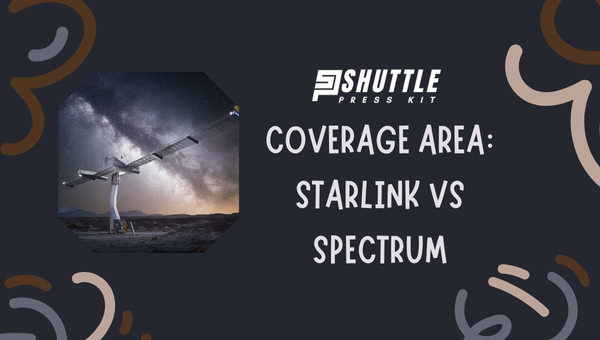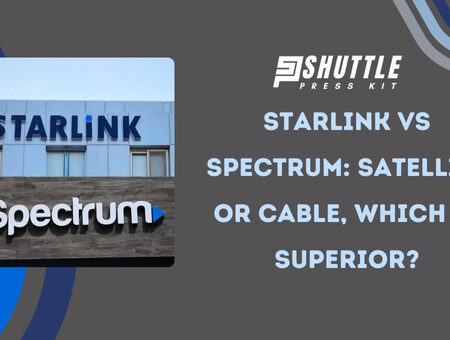Getting the best possible coverage for our internet needs is a high priority in an increasingly digital world. If you find yourself pondering the decision between Starlink vs. Spectrum: Is Satellite or Cable Better?
Then you’re at the right place! This article unravels the functionality, pros, and cons of both platforms, offering in-depth insights that will help you make a measured choice.
When it comes to deciding which reigns supreme between Starlink and Spectrum, it’s important to understand that both platforms have their respective perks. If you prioritize uninterrupted connectivity and solid strength signals, Spectrum’s cable offerings may be your best bet.
However, if your usage leans more towards remote accessibility and flexibility coupled with innovative technology, then Starlink’s satellite-covered internet promises promising performance.
| Attributes | Starlink | Spectrum |
|---|---|---|
| Accessibility | Available in remote and rural areas worldwide. | Mainly available in urban and suburban areas. |
| Installation | DIY installation of satellite dish; no professional needed. | Requires a technician visit for installation. |
| Internet Type | Satellite broadband. | Cable broadband or fiber broadband in some areas. |
| Speed | Speeds from 50 Mbps to 200 Mbps. | Speeds range from 100 Mbps to 1 Gbps. |
| Latency | Higher latency (20-40ms typically, improving). | Lower latency typical of cable systems (less than 20ms). |
| Data Caps | Unlimited data usage. | Usually offers unlimited data, but with some plans may enforce limits or throttling. |
Overview of Starlink vs Spectrum
Starlink, a satellite internet constellation developed by SpaceX, is designed to provide high-speed broadband internet to underserved and remote areas worldwide.

This innovative approach leverages a network of low Earth orbit (LEO) satellites, enabling faster data transmission and reduced latency compared to traditional satellite internet services. Starlink’s major advantage is its ability to deliver internet access in regions where conventional broadband infrastructure, like fiber or cable, is unavailable or financially impractical to deploy.
Spectrum, on the other hand, is a well-established cable internet provider in the United States, offering a range of services including high-speed internet, cable TV, and phone services. Spectrum’s internet relies on a vast network of coaxial and fiber-optic cables, ensuring consistent and reliable service with lower latency compared to most satellite-based solutions.
However, Spectrum’s coverage is largely confined to urban and suburban areas, making it less accessible for rural populations. While Spectrum offers higher bandwidth options and often more stable connections in its service areas, it does not cater to remote locations as effectively as Starlink.
Also Read: Starlink Volcano Mount Guide: Easy DIY Installation Tips
Starlink vs Spectrum Internet Packages
Spectrum Internet is known for providing a range of internet service plans designed to meet various user needs, from casual browsing to high-demand streaming and gaming.
These plans offer different speed tiers to ensure users can select an option that best fits their digital lifestyle. Below, we detail the crucial attributes of each main Spectrum Internet plan available, emphasizing speed, cost, and additional perks.
Plan Options
| Feature | Starlink | Spectrum Standard | Spectrum Ultra | Spectrum Gig |
|---|---|---|---|---|
| Price per Month | Starting around $110 | $49.99 | $69.99 | $79.99 |
| Equipment Fee | Cost for Satellite Dish (Purchase required) | None (Wi-Fi equipment included) | No extra charge (Wi-Fi equipment included) | Includes Wi-Fi equipment at no additional costs |
| Speeds Offered | Up to 150 Mbps | Up to 300 Mbps | Up to 500 Mbps | Up to 1,000Mbps (1 Gbps) |
| Data Allowance/ Policy | Typically unlimited but may have throttling during peak times | / Unlimited data usage without any caps | / Unlimited data | / Unlimited data without restrictions |
Alongside competitive speeds and no hidden equipment fees, all options come with unlimited data bandwidth, ensuring you can enjoy seamless access irrespective of your chosen package
Also Read:T-Mobile RV Internet: Unmatched Connectivity On The Go
Speed: Starlink vs Spectrum
Starlink, operated by SpaceX, leverages a constellation of low Earth orbit satellites to provide high-speed internet across the globe. Its unique satellite-based infrastructure can offer download speeds from 50 Mbps to 150 Mbps, with potential for even higher speeds as the network expands.
This makes Starlink particularly advantageous in rural or underserved areas where traditional broadband services are limited or unavailable.

On the other hand, Spectrum, a cable-based provider, delivers high-speed internet through its extensive terrestrial network. Spectrum can offer speeds ranging from 100 Mbps to 1 Gbps, depending on the service plan and location.
While it generally provides consistent and reliable speeds in urban and suburban areas, its performance may decline in remote regions where infrastructure is not as developed. Thus, Spectrum excels in densely populated areas where its infrastructure is robust, whereas Starlink shines in delivering connectivity to remote locations.
Coverage Area: Starlink vs Spectrum
Starlink, a satellite internet service launched by SpaceX, offers a significant advantage in terms of coverage area. By deploying a constellation of low Earth orbit (LEO) satellites, Starlink can provide internet access to even the most remote and rural locations globally.
This extensive coverage is particularly beneficial for regions where traditional ground infrastructure is either impractical or too costly to implement. In contrast, traditional broadband providers like Spectrum depend on a dense network of terrestrial infrastructure, including fiber optics and cable, which makes it challenging to extend service to sparsely populated or geographically isolated areas.

However, when it comes to speed, Spectrum often has an edge in areas where its infrastructure is well-established. Spectrum provides high-speed internet through its hybrid fiber-coaxial (HFC) network, delivering impressive download and upload speeds, especially in urban and suburban regions.
While Starlink’s satellite internet offers competitive speeds that are continually improving, it may still experience higher latency compared to wired connections like those from Spectrum, due to the inherent nature of satellite communication.
Therefore, users in well-serviced areas might prefer Spectrum for faster and more stable internet performance, while Starlink remains an excellent choice for broader, albeit sometimes slower, coverage.
Comparing Starlink and Spectrum Internet Services
When exploring options for internet service, consumers often weigh various factors such as speed, reliability, and coverage. Starlink and Spectrum are two widely recognized providers that cater to different segments with distinctive technologies. Here’s a focused comparison on the performance aspect of each:
- Technology Basis:
- Starlink operates through a constellation of low-Earth orbit (LEO) satellites, specifically designed to provide global internet coverage.
- Spectrum, on the other hand, delivers its service via cable internet technology which is dependent on physical infrastructure laid out in serviced areas.
- Speed Comparison:
- Starlink offers competitive speeds that can sufficiently meet the needs of most households, particularly impressive given its satellite-based nature.
- Spectrum typically provides faster speeds due to its cable internet setup, with even its basic plans surpassing Starlink’s average offerings.
- Latency Issues:
- With Starlink’s LEO satellites being closer to Earth compared to traditional geostationary satellites, it features lower latency times which are beneficial for activities like gaming or video calls.
- Spectrum benefits from lower latency inherent to cable internet, resulting in smoother online interactions and suitability for real-time applications.
- Reliability and Accessibility:
- One advantage of Starlink is its accessibility in rural or remote areas where traditional broadband services aren’t available or reliable.
- Cable networks like Spectrum generally offer more stable service but are limited by their geographical reach; they can only serve locations where their infrastructure exists.
This comparison highlights that while both providers aim at delivering high-speed internet service, they each have their unique strengths tailored to different user needs – with Starlink focusing on worldwide coverage including hard-to-reach places using satellite technology while Spectrum excels at providing fast and reliable connection via cable in areas within its network footprint.
Also Read: Starlink Offer Phone Service? Discover Now!
FAQs
Is satellite internet as good as cable?
Yes, satellite internet like Starlink has made significant advances, delivering fast speeds, although the performance may vary based on location.
What are the advantages/disadvantages of satellite (Starlink) v/s cable (Spectrum)?
Satellite brings accessibility in remote areas and easy setup, but may suffer from lower speeds and higher latency. In contrast, Cable provides consistent top-notch speed at an affordable price but isn’t available everywhere.
Which one offers better speeds – Satellite or Cable?
Typically, cable providers like Spectrum can offer higher speeds compared to satellite service providers such as Starlink.
Which one provides better coverage – Starlink or Spectrum?
Starlink provides global coverage thanks to its network of satellites while Spectrum has extensive coverage in urban and suburban areas where cables can reach.
Is the cost of Starlink comparable to that of Spectrum?
Though pricing varies with packages and regions generally, Spectrum offers more affordable rates than Starlink which is pricey due to its advanced technology usage.
Also Read: Starlink Ethernet Adapter: Effortless Setup, Honest Review!
Conclusion
When we compare ‘Starlink vs. Spectrum: Is Satellite or Cable Better?’ there is no direct answer as both have their unique features and benefits. Starlink shines with its satellite technology allowing it to provide services globally, especially in areas where traditional cable connections struggle to reach.
On the other hand, Spectrum’s reliable cable infrastructure gives a strong performance in urban areas with an easy-to-use interface and superior sound quality. Pricing may vary based on location and usage but both platforms come with competitive subscription plans. Ultimately, the choice between Starlink and Spectrum boils down to personal preferences, needs, and geographical location.
